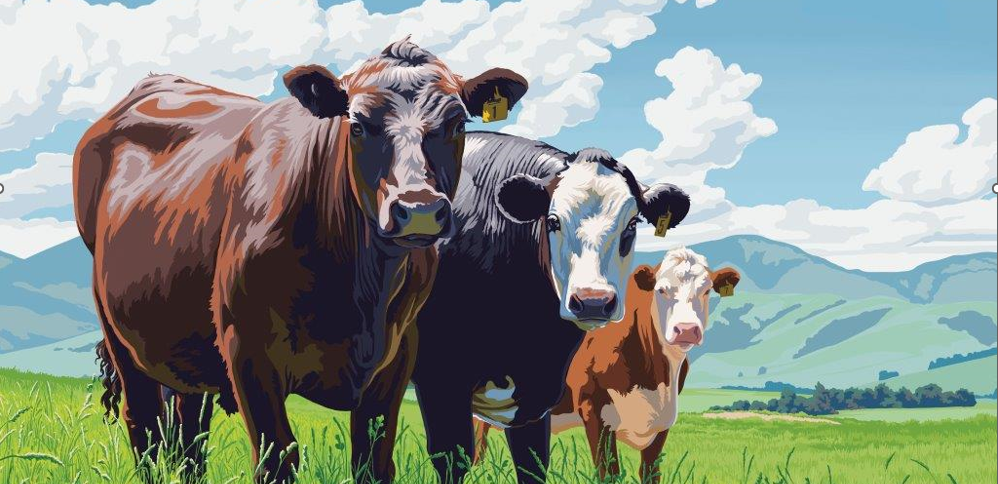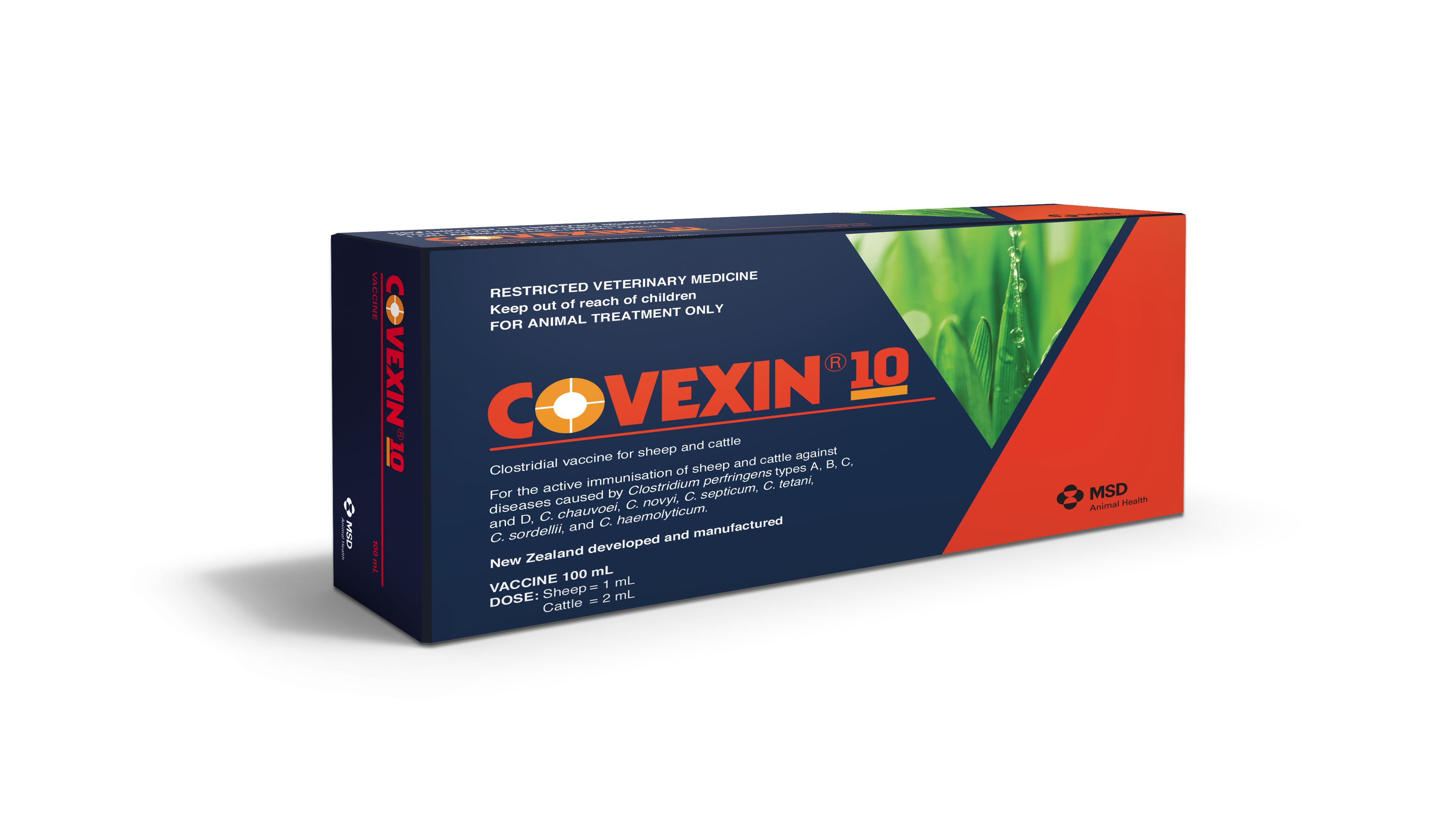

COVEXIN® 10
A 10-in-1 clostridial disease vaccine specially designed for high performance farms.
why USE COVEXIN 10 to Vaccinate against Clostridial disease?
- Clostridial diseases are a significant killer of sheep and cattle on New Zealand farms.
- Covexin 10 provides your livestock with protection against 10 clostridial diseases known to be present in New Zealand.
- For peace of mind. Its difficult to determine which clostridial bacteria your stock are at risk of at any given time. Therefore, choosing Covexin 10 will provide a more comprehensive protection.
- Fast growing/high producing stock grazing new pastures, crops or supplementary feed are more vulnerable to clostridial disease and sudden death.

USER GUIDE
| Dose | Cattle > 2weeks 2mL Sheep* > 2 weeks 1mL |
| Initial Vaccination Programme | 2 Shots |
| Administered by | SC (subcutaneous injection) in the anterior (front) half of the neck |
| Annual Booster | Required |
| Concurrent vaccination | Can be administered at the same time (at alternative sites) as LEPTAVOID® 2 |
| Pack Sizes | 100mL, 500mL |
*Visit www.sheepvax.co.nz for more information on Covexin 10 use in sheep
CLOSTRIDIAL VACCINE OPTIONS & TIMING FOR CATTLE
Calves – TWO SHOTS (Sensitiser & Booster)

Covexin 10 can be used in calves from 2 weeks of age.
Multine/Multine B12 can be used in calves at weaning or from 12 weeks of age.
Previously vaccinated cattle – ONE SHOT (Annual Booster)

- Administering an annual booster to cows 2-6 weeks pre-calving provides passive protection to the calf via colostrum.
FIND OUT MORE ABOUT CLOSTRIDIAL DISEASES
Clostridial diseases (including but not limited to Tetanus, Pulpy Kidney, Blackleg, Malignant Oedema & Black disease) are caused by anaerobic bacteria that are common and widespread in the environment, particularly in soil. The bacteria are also present in the faeces of animals.
The bacteria produce spores that can survive in the environment for a very long time.
To learn more listen to the Head Shepherd podcast about Clostridial diseases featuring MSD Animal Health vets Hamish Pike and Felicity Wills
Clostridial bacteria are widespread in the environment, both in the soil and water, and are shed in faeces of livestock. Clostridial diseases strike rapidly and are almost always fatal. Very rarely are clinical signs seen, with infected animals presenting as “found dead”.
Risk factors are a mixture of animal and environmental factors:
- Animal: reduced immunity, injury and wound infection, liver damage, young stock or rapidly growing stock
- Environmental: highly digestible feed, increased exposure to soil and faecal contamination in the diet.
Practically, the only means of control is vaccination.
The disease-causing bacteria may be picked up at any time by susceptible animals through either wound contamination or ingestion.


